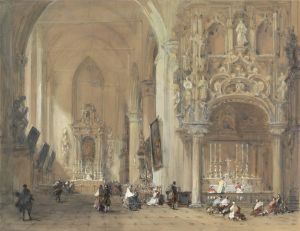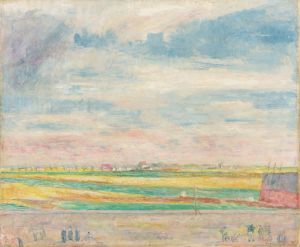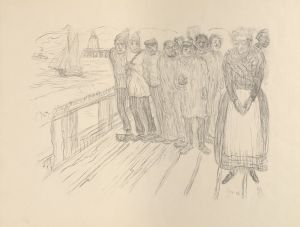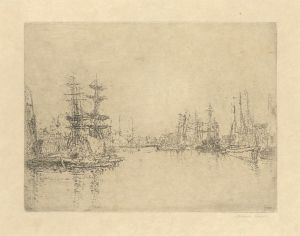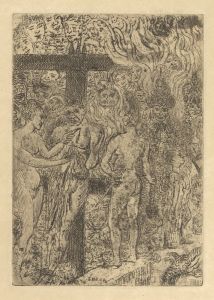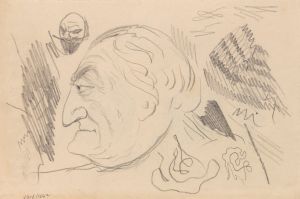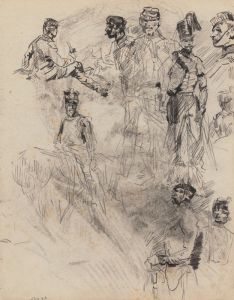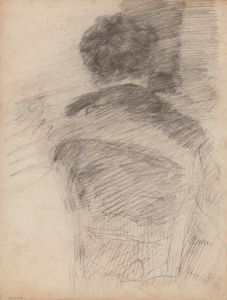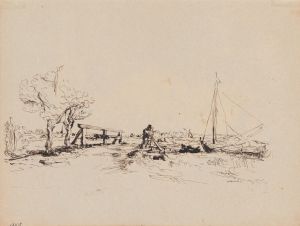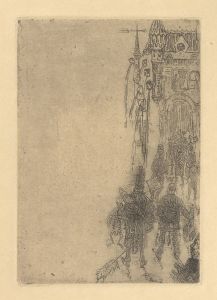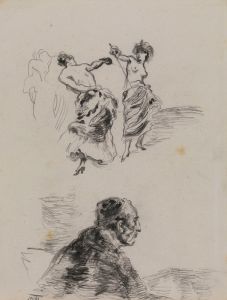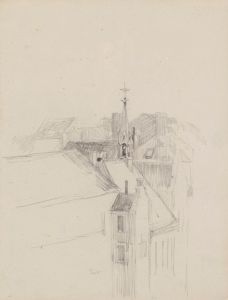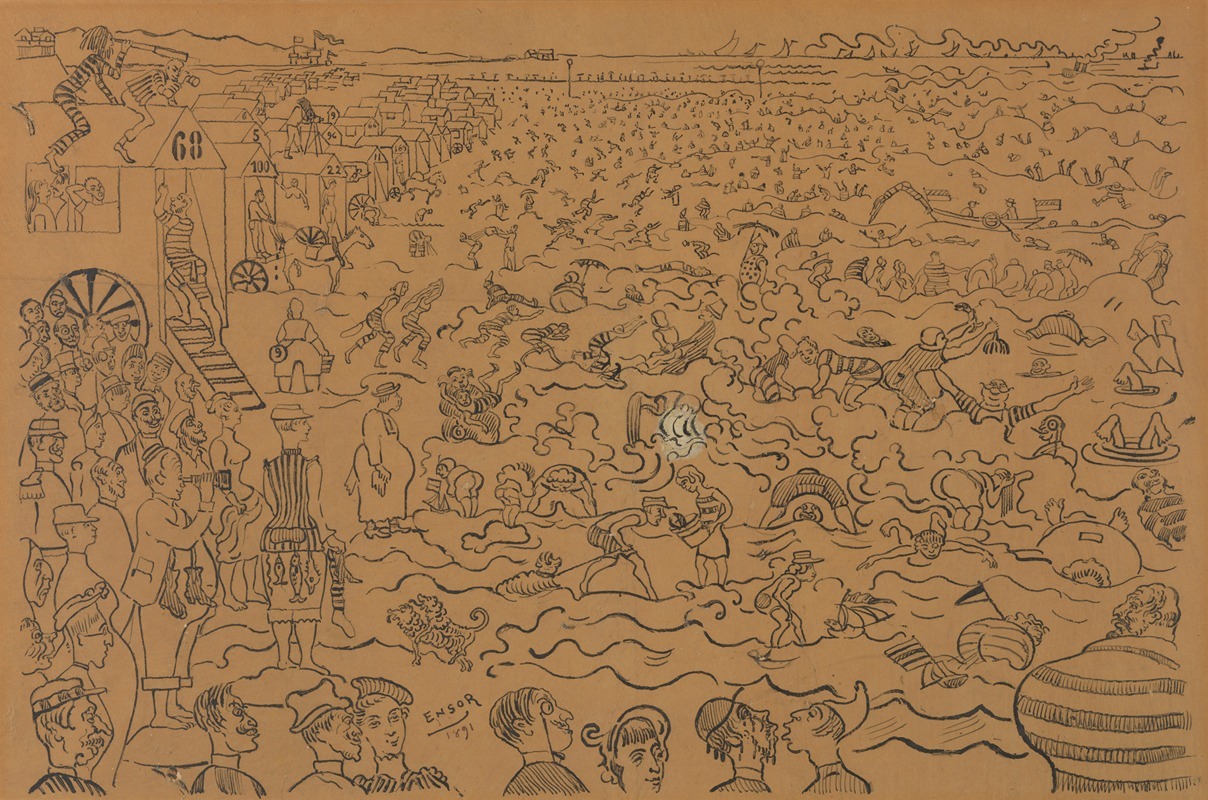
De baden van Oostende
A hand-painted replica of James Ensor’s masterpiece De baden van Oostende, meticulously crafted by professional artists to capture the true essence of the original. Each piece is created with museum-quality canvas and rare mineral pigments, carefully painted by experienced artists with delicate brushstrokes and rich, layered colors to perfectly recreate the texture of the original artwork. Unlike machine-printed reproductions, this hand-painted version brings the painting to life, infused with the artist’s emotions and skill in every stroke. Whether for personal collection or home decoration, it instantly elevates the artistic atmosphere of any space.
James Ensor, a prominent Belgian painter and printmaker, is known for his innovative and often provocative works that played a significant role in the development of modern art. One of his notable paintings is "De baden van Oostende" (The Baths of Ostend), which reflects his unique style and thematic interests.
James Ensor was born in 1860 in Ostend, a coastal city in Belgium, where he spent most of his life. The city of Ostend, with its bustling beaches and vibrant social life, provided a rich source of inspiration for Ensor. His works often depict scenes from Ostend, capturing the essence of the city and its people. "De baden van Oostende" is one such painting that illustrates Ensor's connection to his hometown and his keen observation of its social dynamics.
"The Baths of Ostend" is a vivid portrayal of the beach scene in Ostend, a popular seaside resort during Ensor's time. The painting captures the lively atmosphere of the beach, filled with bathers and holidaymakers enjoying the sun and sea. Ensor's use of bright colors and dynamic composition brings the scene to life, reflecting the energy and vibrancy of the coastal setting. The painting is characterized by Ensor's distinctive style, which often includes elements of satire and caricature, highlighting the eccentricities of human behavior.
Ensor's work is known for its bold use of color and expressive brushwork, and "De baden van Oostende" is no exception. The painting features a rich palette, with vivid blues and yellows dominating the scene, capturing the brightness of the seaside environment. Ensor's brushwork is loose and energetic, adding to the sense of movement and activity within the painting. This approach to color and technique was influential in the development of Expressionism, a movement that sought to convey emotional experience rather than physical reality.
In addition to its aesthetic qualities, "The Baths of Ostend" also reflects Ensor's interest in social commentary. The painting can be seen as a critique of the bourgeoisie and the leisure culture of the time. Ensor often used his art to challenge societal norms and conventions, and this painting is no different. By depicting the beachgoers in a somewhat exaggerated and humorous manner, Ensor invites viewers to reflect on the absurdities of social behavior and the fleeting nature of pleasure.
James Ensor's work, including "De baden van Oostende," has had a lasting impact on the art world. His innovative use of color, form, and subject matter paved the way for future generations of artists, influencing movements such as Expressionism and Surrealism. Ensor's ability to blend humor with serious social critique continues to resonate with audiences today, making his work both timeless and relevant.
"The Baths of Ostend" remains an important piece within Ensor's oeuvre, showcasing his unique artistic vision and his deep connection to his hometown. Through this painting, Ensor captures not only the physical beauty of Ostend's beaches but also the complex social interactions that take place within this public space. As such, "De baden van Oostende" stands as a testament to Ensor's skill as an artist and his insightful commentary on the human condition.





